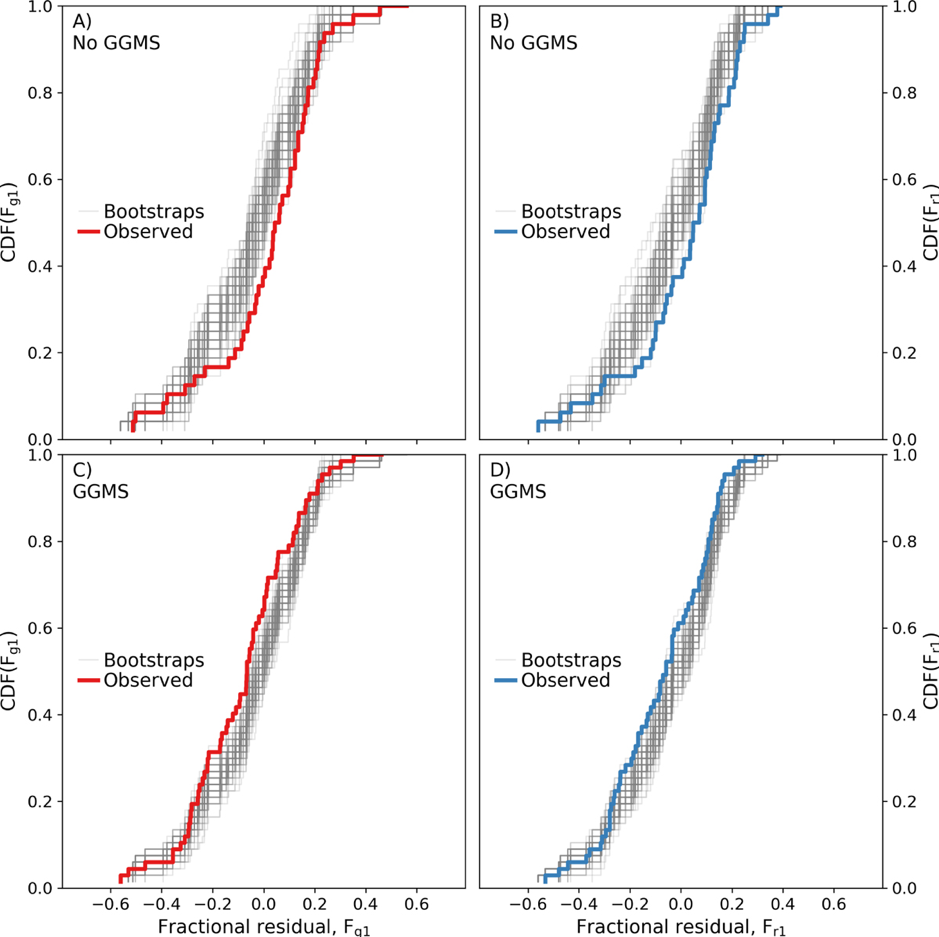MIST
Magnetosphere, Ionosphere and Solar-Terrestrial
What can the annual 10Be solar activity reconstructions tell us about historic space weather?
By Luke Barnard, Department of Meteorology, University of Reading, UK.
Cosmogenic isotopes, such as 10Be and 14C, provide estimates of past solar activity, constraining past space climate with reasonable uncertainty for several millennia. However, much less is known about past space weather because as we look further into the past, particularly before the space age, reliable records of space weather events become scarce (Barnard et al., 2017).
Advances in the analysis of 10Be by McCracken & Beer (2015) (MB15) suggest that annually resolved 10Be can be significantly affected by solar energetic particle (SEP) fluxes. This presents an opportunity to provide a valuable record of past SEP fluxes, and to determine and isolate any SEP effects for the accurate quantification of past solar activity.
In Barnard et al. (2018) we assess whether the MB15 reconstruction was biased by significant historic space weather, and whether 10Be can provide a proxy of such events. We compared the MB15 reconstruction of the annual heliospheric magnetic field magnitude (HMF) with two independent HMF estimates derived from sunspot records and geomagnetic variability (Owens et al., 2016), which are thought to be unbiased by space weather events. Computing the differences between the MB15 HMF reconstruction with the geomagnetic and sunspot reconstructions over the 115-year period of 1868-1983, we performed statistical tests to infer whether the differences appear to depend on large space weather events. We use records of ground level enhancements (GLEs) and great geomagnetic storms (GGMS, the top 10% of all storms identified in the aa geomagnetic index), as markers of years with large space weather events.
Figure 1 shows the empirical cumulative distribution function (ECDF) of the differences between the MB15 and geomagnetic reconstructions (Fg1), and between MB15 and the sunspot reconstruction (Fr1). Panels A and C show the ECDF of Fg1 (red line) in years with and without GGMS respectively, while Panels B and D show the ECDF of Fr1 (blue line) under the same conditions. Each panel also shows bootstrapped estimates of the ECDF (grey lines) from resampling the complete Fg1 and Fr1 series, independent of whether GGMS occurred. The distributions of Fg1 and Fr1 are different in years with and without GGMS, and, being at the opposite extremes of the bootstrap distribution, are larger than would be expected due to random sampling of the same underlying distribution. Consequently, we interpret this as evidence that large space weather events do bias the MB15 reconstruction.
Future advances rely on reducing uncertainty on the inversion of the cosmogenic isotope data, requiring a holistic modelling approach for the Earth system, magnetosphere, heliosphere and local interstellar environment. The research output of the MIST community is important in improving the models underlying the inversion of the cosmogenic isotope data, and consequently for improving the quantification of past space weather and climate.
Please see the paper below for more information:

Figure 1. (A) The ECDF of Fg1is given in red, computed for only years without GGMS events. The grey lines show 100 bootstrap estimates of the Fg1ECDF, computed by randomly sampling the Fg1series. Panel B has the same structure as panel A, but instead shows the ECDF of Fr1in blue. Panels (C) and (D) have the same structure as (A) and (B), but instead show the ECDFs of Fg1and Fr1for only years with GGMS events.